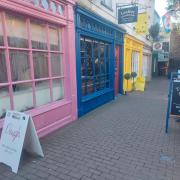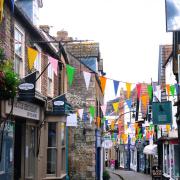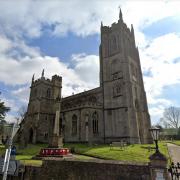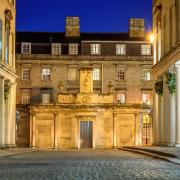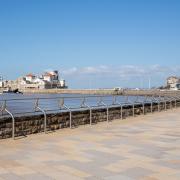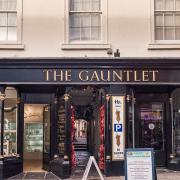A city that had its beginnings more than 2,000 years ago has many secrets and mysteries. CHARLES NEVIN reveals 12 he has written about in a new collection of stories.
1. You may be aware that Bath is said to have been founded by the legendary King Bladud - but did you know that his reign came to an abrupt if predictable end when he tried to fly?
-----------------------------------------------------------------------------------------------------
2. The Romans of Aquae Sulis (their name for Bath) would curse thieves by writing on small lead or pewter tablets, beseeching the Bath goddess, Sulis Minerva, to do horrible things to the perpetrators. The tablets would then be thrown into the hot spring at the baths sacred to the goddess. Bloodcurdling examples can be seen at the Roman Baths Museum. But did they work?
-----------------------------------------------------------------------------------------------------
3. Alfred the Great strengthened the walls of the city against the Vikings. Little of the walls remain, but one of the four Medieval gates survives, tucked away by Pulteney Bridge.
-----------------------------------------------------------------------------------------------------
4. Sir John Harington, the Elizabethan wit and courtier who saved the Abbey from ruin and decay, also invented the water closet.
-----------------------------------------------------------------------------------------------------
5. The Bath Oliver biscuit is said to have been invented by the famous 18th century Bath physician, Dr William Oliver. But why did he give the recipe to his coachman?
-----------------------------------------------------------------------------------------------------
6. John Wood, the architect of much of Georgian Bath, was a great believer in ancient lore and thought that Bladud had been a mighty magician. If you go to the Circus, you will see 525 symbols on the frieze running round above the doors of the houses, from rays of light, thunderbolts, suns, moons, triangles, beehives, serpents, a phoenix, blasted oaks, roses and skulls to a wolf howling at the moon. Their meaning remains a mystery.
-----------------------------------------------------------------------------------------------------
7. Wood believed that Bath was founded in about 500 BCE by Bladud, and had been an enormous metropolis, stretching from the standing stones of Stanton Drew, marking what was a Druid academy, to Wookey Hole, 21 miles south, hewn by the Druids for secret ceremonies, via West Harptree, a school for, naturally, harpists.
-----------------------------------------------------------------------------------------------------
8. Samuel Johnson, the famous lexicographer, and James Boswell, his almost equally noted biographer, visited Bath several times. They were accustomed to stay at the famous old coaching inn, The Pelican. The inn is long gone, but you might be surprised to know what now stands in its place: the Hilton Hotel.
-----------------------------------------------------------------------------------------------------
9. The famous Gorgon’s Head, which welcomes visitors to the Roman Baths today, and is also the logo for the University of Bath, was dug up by workmen building the new Pump Room in 1790. Who it is meant to represent, and even whether it is the face of a man or a woman, is lost in time.
-----------------------------------------------------------------------------------------------------
10. The Great Bath itself, pride of the city’s attractions, was only rediscovered in 1880. Originally, it had a mighty roof 40 metres high, but the city fathers decided it would be too expensive to recreate it.
-----------------------------------------------------------------------------------------------------
11. Emperor Haile Selassie of Ethiopia arrived in Bath after being forced to flee his country by the invading Italians in 1936. The emperor, who claimed descent from King Solomon and the Queen of Sheba, was much admired and feted by the people of Bath. After Britain helped him regain his throne, he gave his Bath home to the people of the city. Today it is used by the Bath Ethnic Minorities Senior Citizens’ Association, and provides a place of worship for followers of both the Ethiopian Orthodox Church and the Rastafarian religion, which worships Haile Selassie as its god.
-----------------------------------------------------------------------------------------------------
12. John Betjeman’s famous poem, In A Bath Teashop, features ‘a thumping great crook’ and ‘such a very ordinary little woman’ deeply in love. The crook was Betjeman himself, who worked in Bath writing propaganda during World War Two, and the little woman was a BBC programme radio engineer who was not his wife. She was less than pleased with the description and wrote to him: “You may be a thumping crook, but I’m not an ordinary little woman.” Still, they did write to one another every year until he died.
-----------------------------------------------------------------------------------------------------










